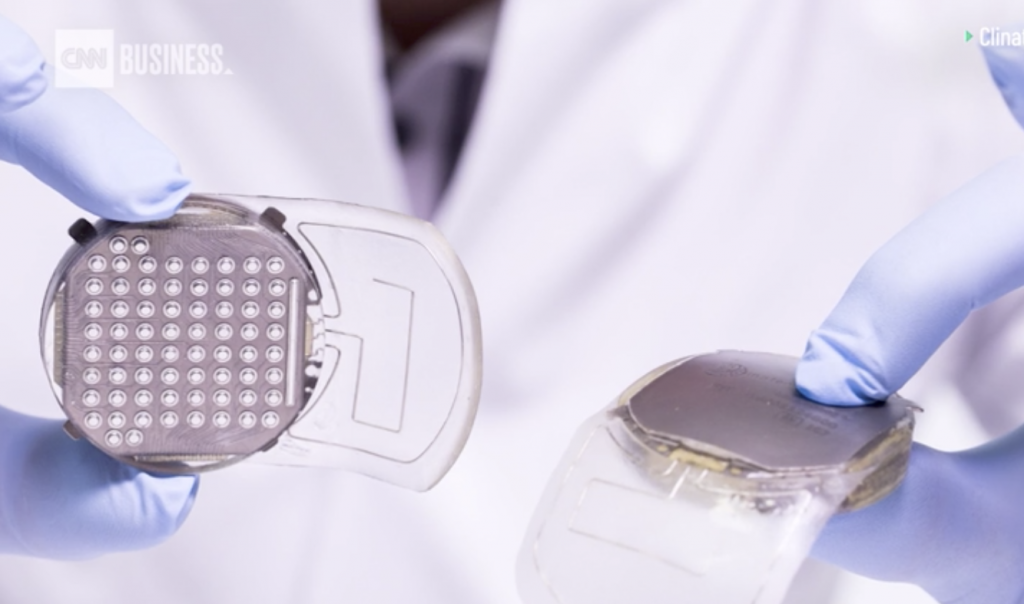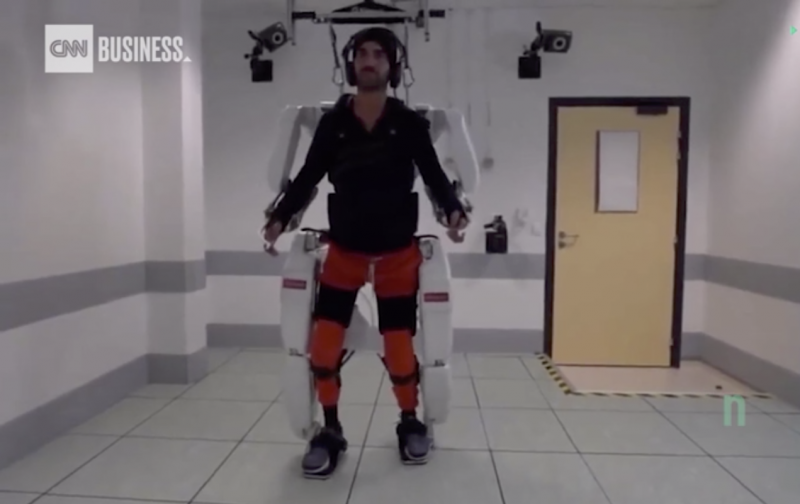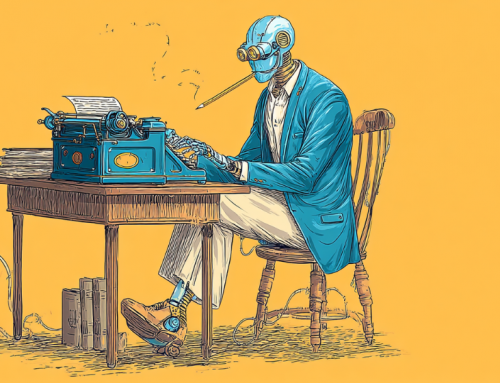AI Miracle for Severely Disabled Becomes Reality
In astounding news for people unable to walk or use their arms due to physical disabilities, a robotic suit being tested in France used only the signals from the brain of the patient to facilitate arm and leg movements.
In a story on cnn.com, writer Amy Woodyatt explains how a French team of scientisits and AI programmers built this amazing suit. Researchers described how a tetraplegic man was able to move all four of his paralyzed limbs by using the brain-controlled robotic suit. The 28-year-old man from Lyon, France, known as Thibault was paralyzed from the shoulders down after falling 40 feet from a balcony, and left with only slight movement in his left wrist.
“Our findings could move us a step closer to helping tetraplegic patients to drive computers using brain signals alone, perhaps starting with driving wheelchairs using brain activity instead of joysticks and progressing to developing an exoskeleton for increased mobility,” Professor Stephan Chabardes, a neurosurgeon from Grenoble University Hospital and author of the study, said in a press release.
It took two years for Thibault to reach that milestone after researchers from the University of Grenoble in France, biomedical research center Clinatec and the CEA research center implanted recording devices on either side of Thibault’s head, between the brain and skin, to span the sensorimotor cortex the area of the brain that controls motor function and sensation.
Electrode grids collected the man’s brain signals and transmitted them to a decoding algorithm, which translated the signals into movements and commanded a robotic exoskeleton to complete them. Thibault trained in using the system before he achieved success. The suit is designed for long-term use to activate all four limbs, according to Alim-Louis Benabid, President of the Clinatec Executive Board.

Wafer thin chips were implanted in Thibalt’s head to help him control the exoskeleton.
The suit is not the first to enable disabled people upright mobility, but it’s the most advanced.
A “wearable cyborg” also helped a woman with Guillian-Barre Syndrome to walk at the Brooks Cybernic Treatment Center in Jacksonville, Florida. It was the first U.S. center to use a unique rehabilitative technology developed in Japan, the Hybrid Assistive Limb (HAL), last year.
The technology is expected to help not only disabled and injured patients to walk, it will also be able to assist a rapidly aging population worldwide. According to the World Health Organization (WHO), by 2050 more than 2 billion people will be over age 60. The global medical exoskeleton market is estimated to be worth $2.8 billion by 2023, according to research company Markets and Markets.
Yoshiyuki Sankai, the billionaire developer of HAL, made his first HAL prototype in 1998. It is now a sleek, lightweight version with multiple applications. Sankai’s exoskeletons are helping patients restore their muscle movements in Japan, the Philippines and in Germany and Poland and are being used in factories.
read more at cnn.com








Leave A Comment